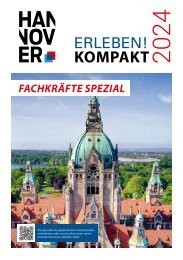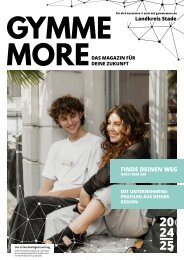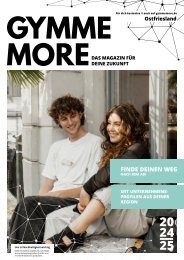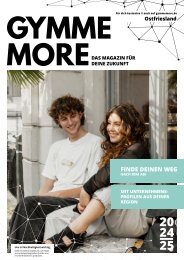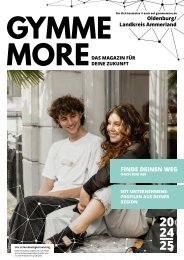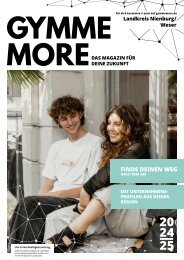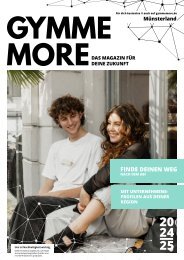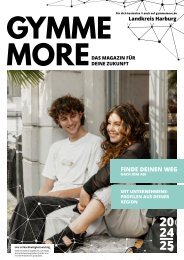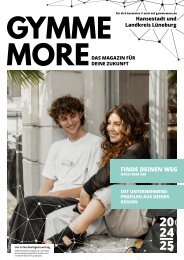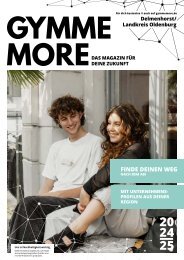Erfolgreiche ePaper selbst erstellen
Machen Sie aus Ihren PDF Publikationen ein blätterbares Flipbook mit unserer einzigartigen Google optimierten e-Paper Software.
This was Bremen’s first bankruptcy in the post-war economic<br />
miracle. The mayor at that time, Wilhelm Kaisen,<br />
saw no possibility of pumping several million D-mark into<br />
the company, although 20,000 jobs were at stake. This was<br />
the end for Borgward, and nearly also the end for Bremen<br />
as an automotive location.<br />
Although Hanomag and subsequently Mercedes-Benz<br />
took on the former Borgward factory to make small trucks,<br />
jobs were available for only 3,000 of the former workforce<br />
of 20,000 employees. New hope to revive automotive<br />
production here emerged only when the former Mercedes<br />
boss Werner Niefer started an urgent search for a new car<br />
site because the main factory in Sindelfingen was simply<br />
no longer able to cope with demand.<br />
When Hans Koschnick, Bremen’s mayor from 1967 to 1985,<br />
heard about this, he tried to bring Bremen into play.<br />
Bremen urgently needed new jobs. Borgward was not the<br />
only company in difficulties: other industrial companies<br />
such as Nordmende were insolvent and signs of the shipyard<br />
crisis were already becoming visible on the horizon.<br />
But initially, the car makers from Stuttgart paid no attention<br />
to Bremen, and looked around in Düsseldorf, Hamburg<br />
and Emden instead. And so the best land next to<br />
the Borgward factory was offered to two allotment asso -<br />
ciations that were being forced to move.<br />
Hans Koschnick’s great coup<br />
But then the long-awaited call from Daimler boss Werner<br />
Niefer came after all. Koschnick remembers Werner Niefer<br />
asked if he could see him even at the weekend. Of course<br />
he could. They met for lunch and talks in the Senate guest<br />
house. Niefer showed a certain degree of interest, but was<br />
also sceptical. “Can you really manage things so we can<br />
start in two to three years?” he asked Koschnick. After all,<br />
houses would have to be pulled down and the allotments<br />
would have to move again. On the other hand, they were<br />
talking about 6,000 to 8,000 jobs.<br />
“It won’t be easy, but I’ll do my best”, Koschnick replied.<br />
“Give me two weeks”. He managed to convince the Senate,<br />
but faced a hard struggle with the allotments, worked<br />
primarily by traditional SPD (Social Democrats) voters, who<br />
were supported by students from the recently founded<br />
University of Bremen. They accused the Senate of being all<br />
too willing to bow to the interests of a “capitalistic corpo -<br />
ration”. Today, even the former contenders are probably<br />
glad that Mercedes came to Bremen after all. A workforce<br />
of more than 12,500 employees makes the car maker by<br />
far and away the biggest employer in the region, together<br />
with about 25,000 jobs in the supplier industry and logistics<br />
sector.<br />
But it was not just parts of Bremen’s population that were<br />
sceptical, including those living in the district of Heme -<br />
lingen that would be severely affected by factory traffic.<br />
Koschnick remembers how suspicious Stuttgart was of the<br />
new car factory being constructed in Bremen. “For the<br />
Daimler factory worker, a Borgward was naturally never as<br />
good as a Mercedes. So they reckoned “They can’t do it up<br />
there in Bremen”. But we showed them that we definitely<br />
could!”<br />
Top marks for the Bremen plant<br />
Today, no one at Daimler has any doubts any more.<br />
Bremen always gets top marks in internal competition<br />
between the company’s sites. The workforce in Bremen<br />
has the reputation of being highly flexible and innovative<br />
whenever new model series are being introduced. That is<br />
why the Group named the Bremen plant as its “centre of<br />
excellence” for the launch of the new C-class. In 2014,<br />
there will be a new version of the C-class, the top-selling<br />
model in the Mercedes car factory. The new car will be<br />
produced not just in Bremen but also in East London<br />
(South Africa), Tuscaloosa/Alabama (USA) and Beijing<br />
(China). This demands intensive preparation. Already many<br />
months before the start of production, 300 employees<br />
from East London, Tuscaloosa and Beijing came to Bremen<br />
127






